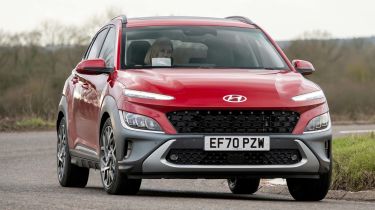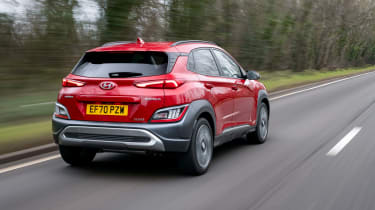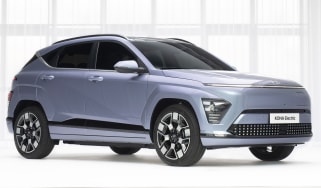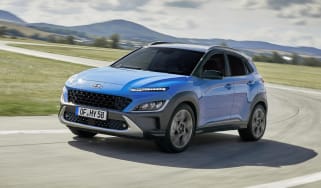Hyundai Kona Hybrid review
The Hyundai Kona Hybrid is efficient and visually distinctive, but falls behind class leaders in some key areas

Pros
- Great fuel economy
- Quiet at steady speed
- Stylish design throughout
Cons
- Not fun to drive
- Not hugely practical
- Noisy when you accelerate
| Car type | Fuel economy | CO2 emissions | 0-62mph |
|---|---|---|---|
| Hybrid | 55-58mpg | 112-115g/km | 11.0-11.3s |
The Hyundai Kona Hybrid combines low emissions with the popular SUV bodystyle. Rather than being a plug-in model, it’s a conventional ‘self-charging’ hybrid, which generates electricity from the small petrol engine and regenerative braking. The Kona is also available as a mild-hybrid petrol, and there’s a fully-electric version which somewhat outshines the hybrid we’re reviewing here. That version is badged as the Kona Electric.
If you can’t make the electric model work, though, the Kona Hybrid is your best bet for low running costs. It’s got a whole host of rivals, including the Kia Niro, Toyota C-HR, and Renault Captur E-Tech.
The Kona hybrid uses a 1.6-litre petrol engine with a 43bhp electric motor for a combined 139bhp. Performance isn’t a strong point – although admittedly that’s not the main factor for this sort of car.
There’s a small 1.56kWh battery, and while the Kona Hybrid can run on electric power alone for short periods, it’s mainly used to make driving in traffic more efficient. The computer automatically turns the engine on and off to achieve this, and it does so seamlessly. The automatic gearbox means it’s really easy and relaxing to drive in traffic.
Official figures suggest that the Kona Hybrid will return between 55 and 58mpg, depending on which model you go for (the higher-spec models are less efficient). We found that these numbers aren’t unrealistic in real-world conditions, although they’re not class-leading. Low CO2 emissions of 112-115g/km mean it will be cheaper to tax than petrol versions.
The Kona likes to be driven in a relaxed manner. It’s hardly fast, as 0-62mph takes over 11 seconds, but it’s mainly the automatic gearbox at fault. It tends to react slowly to your inputs, and brings revs up to a loud drone when you do want to accelerate, so it’s best to use a light throttle and keep things relaxed. The Kona leans into corners and the steering is light and doesn’t have much feedback, so it’s not one for keen drivers. Yet even on models on 18-inch alloy wheels, it’s comfortable over bumps, which reinforces the idea that this car is more about relaxation than fun.
Inside, the interior styling lives up to the promise of the sharp, appealing exterior. Although the doorbins are a bit small, there’s plenty of storage space otherwise and a comfortable driving position with good visibility is easy to find. Large families may be disappointed with the practicality, however. With the front seats pushed back, legroom is only really suitable for small children, while the 374-litre boot is far from the largest in the class (although not far off the Toyota C-HR). For a more detailed look at the Hyundai Kona Hybrid, read on for the rest of our in-depth review...





